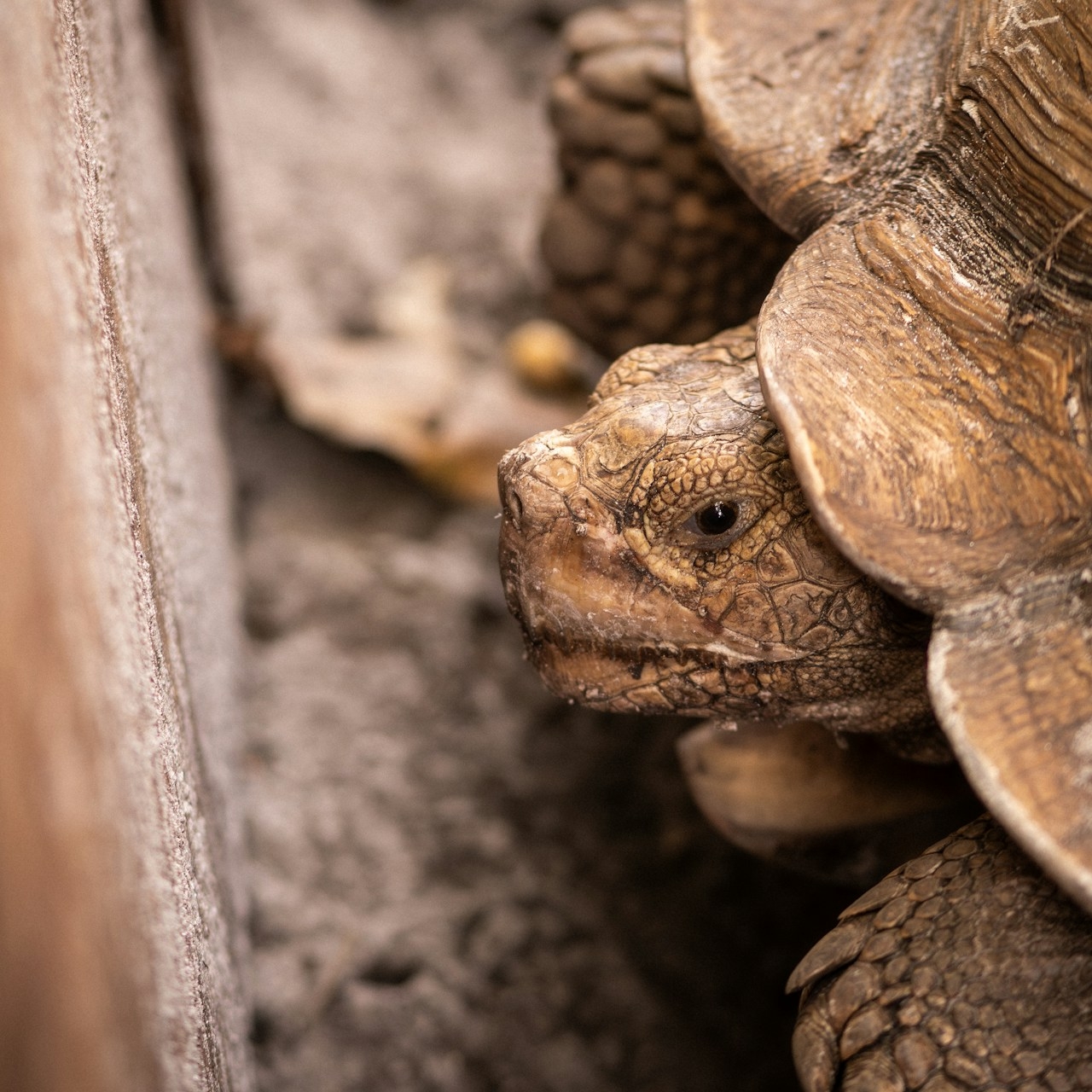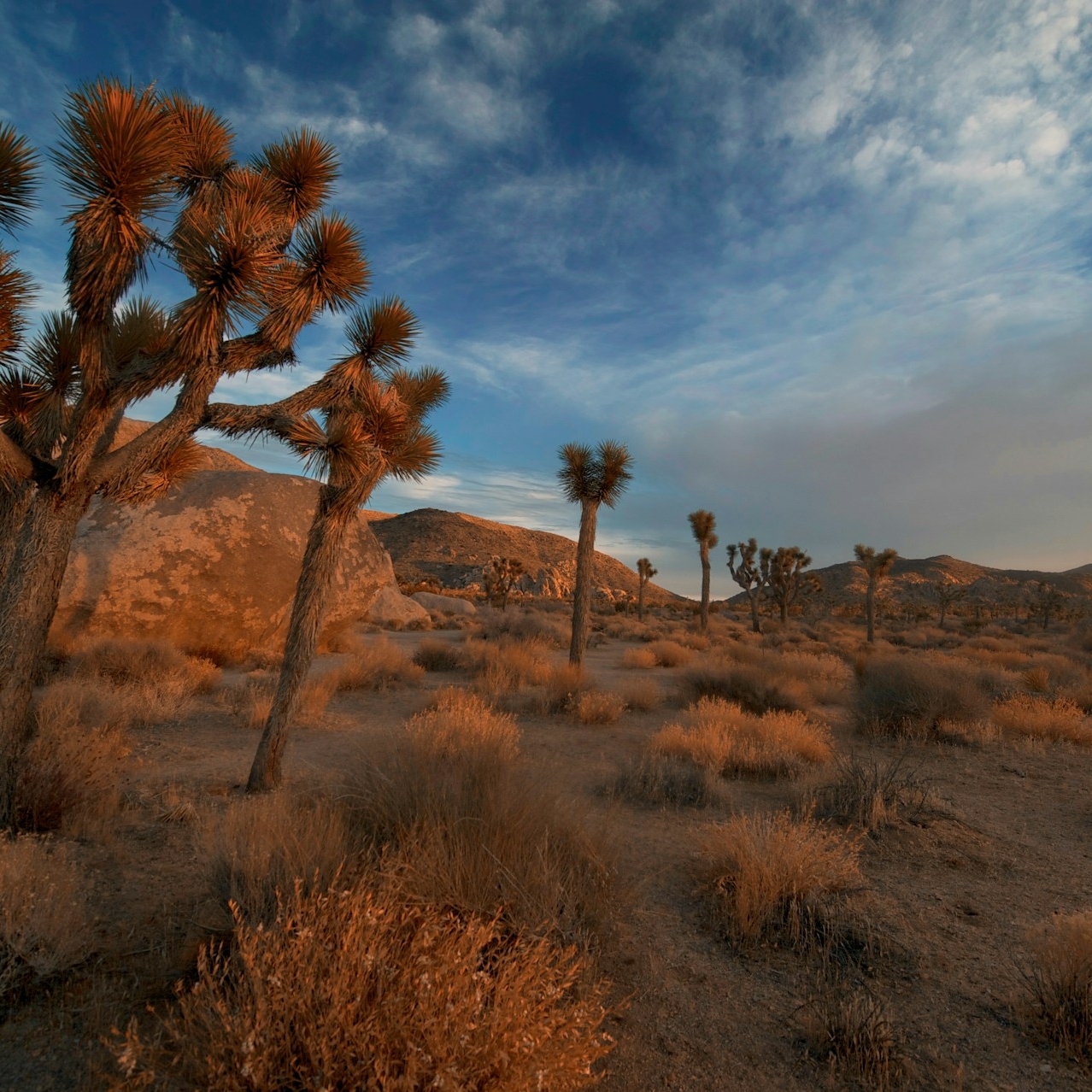Nestled amidst the Mojave Desert’s arid expanse, the desert tortoise (Gopherus agassizii) emerges as a resilient symbol of adaptation and survival in one of the harshest environments on Earth. Native to the southwestern United States, these remarkable reptiles have evolved unique traits to thrive in the unforgiving desert terrain.
Desert Tortoise Adaptations
The Mojave Desert, characterized by its scorching temperatures, sparse vegetation, and rugged terrain, presents a formidable challenge for most lifeforms. Yet, the desert tortoise has managed to carve out a niche for itself in this seemingly inhospitable environment. One of the key adaptations that enable their survival is their ability to dig burrows. These burrows provide refuge from the extreme heat of the day and the chilly nights, offering a stable microclimate where tortoises can regulate their body temperature and conserve moisture.
Desert tortoises are also adept at conserving water, a vital resource in the arid desert landscape. They can store water in their bladder for months and reabsorb it as needed, enabling them to survive long periods without direct access to water. They primarily rely on moisture from the vegetation they consume, such as grasses, wildflowers, and cacti, and they may drink water from rain pools when available. This remarkable adaptation helps them endure the Mojave Desert’s frequent, prolonged droughts.
Threats to Desert Tortoises
Despite evolutionary adaptations, desert tortoises are now federally listed as threatened under the U.S. Endangered Species Act (ESA). In addition to habitat loss, Upper Respiratory Tract Disease (URTD) has devastated populations, particularly in areas with a history of released pet tortoises. Predation by invasive species like ravens, which are attracted to human developments, further compound the challenges facing these reptiles.
Off-road vehicle (ORV) recreation also poses significant risks to desert tortoise populations. The delicate desert landscape is easily disturbed by vehicle activity, which can directly harm the tortoises and their habitats.
Minimizing ORV Impacts
To minimize the impact of ORV use on desert tortoises, several practices should be adopted:
- Stay on Designated Trails: Off-roaders should strictly adhere to marked trails and designated off-road areas. Venturing off these paths can destroy tortoise burrows, disturb nesting sites and cause habitat fragmentation. Many off-road areas are mapped to avoid critical tortoise habitats, so staying on designated trails helps protect both the tortoises and the ecosystem.
- Slow Down and Be Vigilant: Desert tortoises are often difficult to spot, particularly when they are crossing roads or trails. Off-road drivers should maintain moderate speeds and be on the lookout for tortoises, especially in areas where they are known to inhabit. Slowing down gives drivers more time to react if a tortoise is on the trail.
- Avoid Wet Areas: After rain, desert tortoises are more likely to be active above ground as they seek out puddles to drink. ORV enthusiasts should be cautious and avoid driving through these temporary water sources, as tortoises are likely to congregate there. Driving through these areas can also create deep ruts, which may trap smaller tortoises and lead to injury.
- Respect Seasonal Restrictions: Some areas impose seasonal restrictions on off-road activity to protect wildlife, including desert tortoises, during sensitive times such as mating or hibernation. Following these restrictions helps ensure that tortoise populations are not disturbed during critical life stages.
- Clean Vehicles to Prevent Invasive Species: ORV use can inadvertently introduce invasive plant species to the desert, which compete with native vegetation that tortoises rely on for food. Off-roaders can help by cleaning their vehicles before entering desert areas, especially if they’ve traveled through areas with non-native plant species.
- Support Educational Efforts: ORV clubs can play a vital role in protecting desert tortoises by promoting responsible riding practices. Many ORV organizations and tour operators – like Happy Trails Rental – already work with conservation groups to educate riders on minimizing their environmental impact. By participating in and supporting these programs, off-roaders can help ensure the long-term survival of the desert tortoise.
In taking these precautions, off-road vehicle users can enjoy desert landscapes while also safeguarding the delicate balance of the ecosystem. When combined with broader conservation efforts, responsible ORV practices can help mitigate one of the significant human-induced threats to desert tortoises, ensuring that these resilient reptiles continue to thrive in the Mojave Desert for generations to come.
Experience the Mojave Desert with Happy Trails Rental
At Happy Trails Rental, we offer an exciting range of equipment to elevate your Mojave Desert adventure. Whether you’re your new to off-road exploration, or an experienced outdoor enthusiast, we have you covered with the best vehicles and trails to get you out and potentially cross paths with a desert tortoise.
Ready to embark on an unforgettable journey through the Mojave Desert? Contact Happy Trails Rental today, or view our self-guided GPS tours below and prepare for an experience you’ll never forget.
Self-Guided GPS Tours
Follow our pre-programmed GPS routes to become your own tour guide and discover the beauty and adventure of California's Mojave Desert at your own pace!


